by Ken Lain, the mountain gardener
Lavenders can be overwhelming, with over 17 mountain hardy varieties sold here at Watters Garden Center. With this simple guide, you will be a garden expert on this fragrant mountain herb.
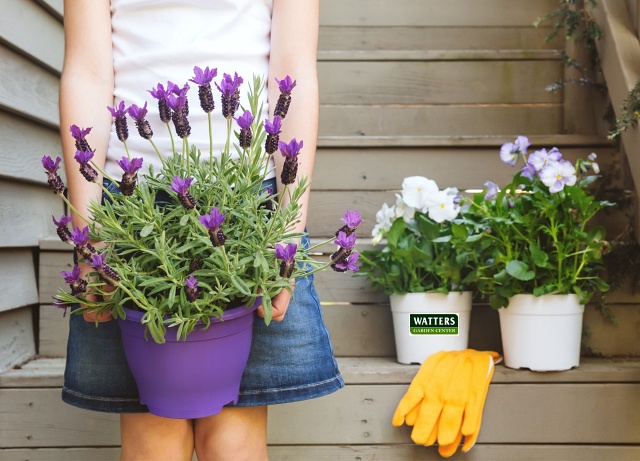
On the Go Answer – Readers Digest-type Condensed Version of this Article
17 types of Lavender grow locally: English, French, Spanish, sweet, Fernleaf, and lavandin.
Lavender grows best in the hot sun and well-drained soil.
Feed twice per month with Watters ‘Flower Power’
Cut Lavenders back by shearing foliage by a third right after flowering.
Lavender flowers are harvested as fresh-cut flowers or dried.
Companion Plant that outshines the rest is Rose of Sharon
Purple an Expert can Spot
Lavenders grown in the mountains of Arizona are grouped into six main types: English, French, Spanish, Sweet, Fern leaf, and Lavandin. There are others, but these are the most robust and popular varieties found seasonally at your garden center. You will find many types at Watters now, but more detail, photos, and purchase options are linked to each variety.
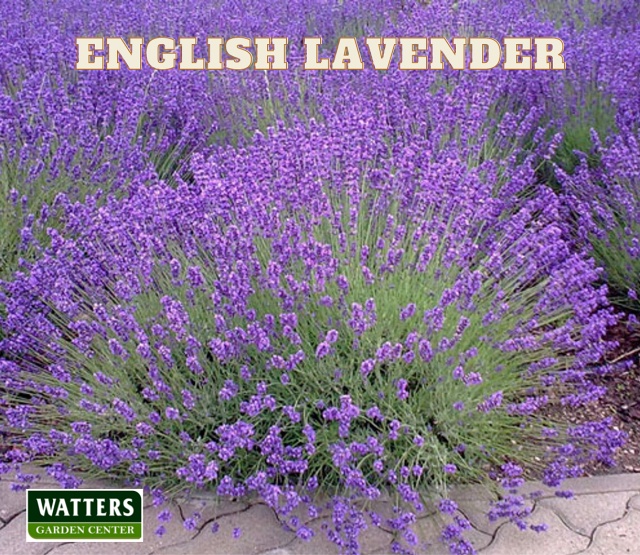
English Lavender is the wonderfully fragrant Lavender commonly dried for sachets and decorations. English Lavender forms a mounding shrub from 8 inches to 2 feet tall, with gray-green, smooth-edged foliage. The bloom period is from late spring to mid-summer.
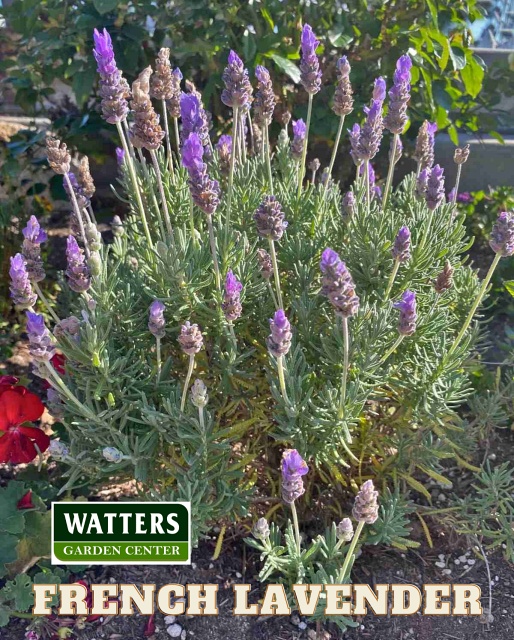
French Lavender – In sunny Arizona gardens, French Lavender blooms most of the growing season. An irregular shrub reaching 3 feet tall and up to 4 feet wide. The leaves are toothed in green or gray. The flowers are purple, with two little “rabbit ear” petals on top. ‘Goodwin Creek’ is the most popular hybrid at the garden center, with lightly toothed, very silver leaves and dark, violet-blue flowers that bloom continually.
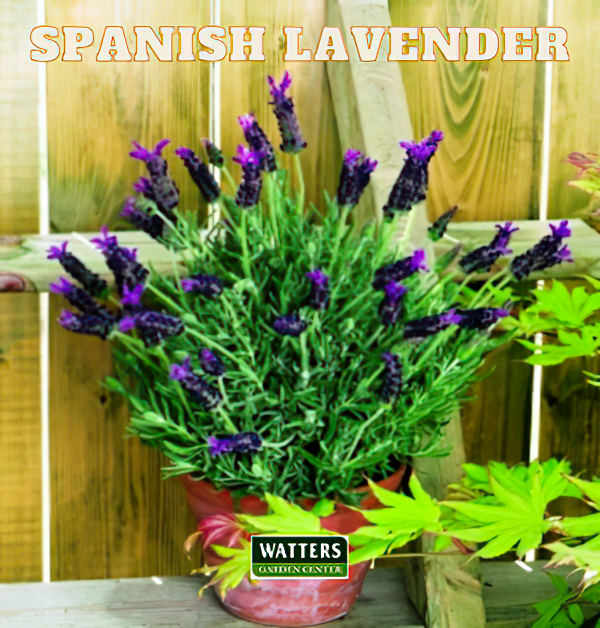
Spanish Lavender has small, silver-green leaves and chubby flowers with pronounced “rabbit ear” petals. Many new varieties have large and prominently contrasting “ears” (2-4) of purple, black-purple, cream, and white. Plants mound from 18 inches to about knee-high and equally wide. As pretty as it is fragrant.
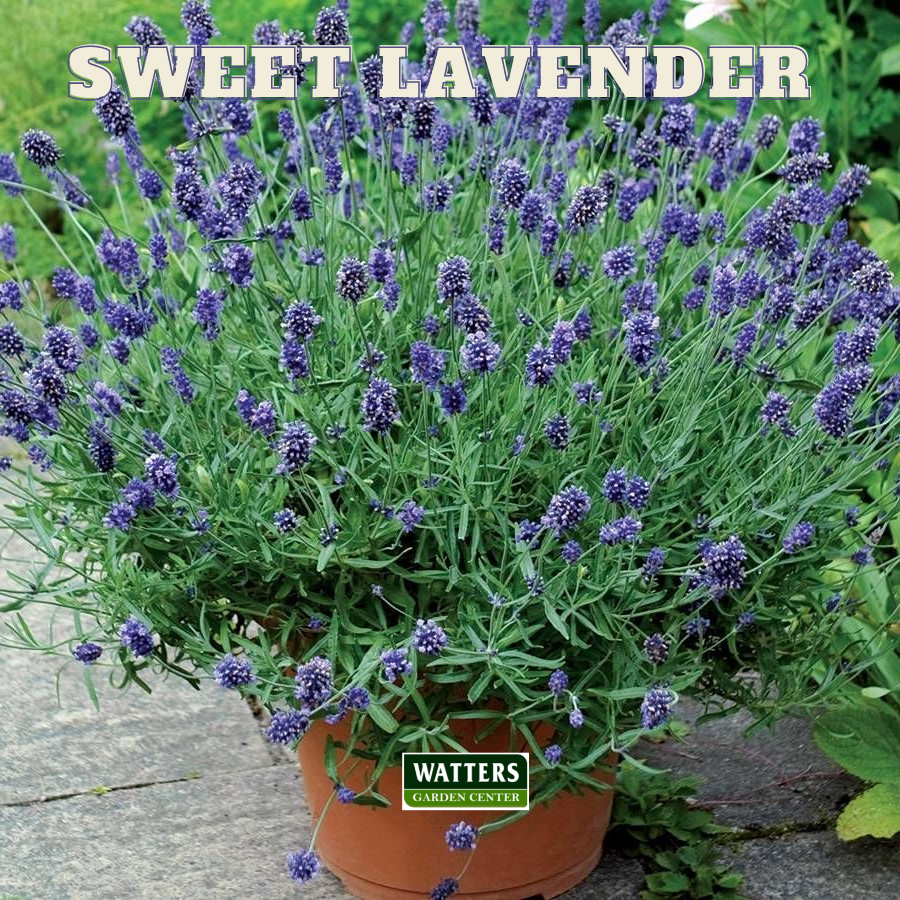
Sweet Lavender enjoys the hottest parts of the landscape. Very, very heat tolerant, these lavenders have flowers on tall, wiry stems. Most flowers are bright, violet-blue, thin, and narrow. Shrubs can reach just above knee height and wide and bloom all summer. The fragrance is mustier than English Lavender.
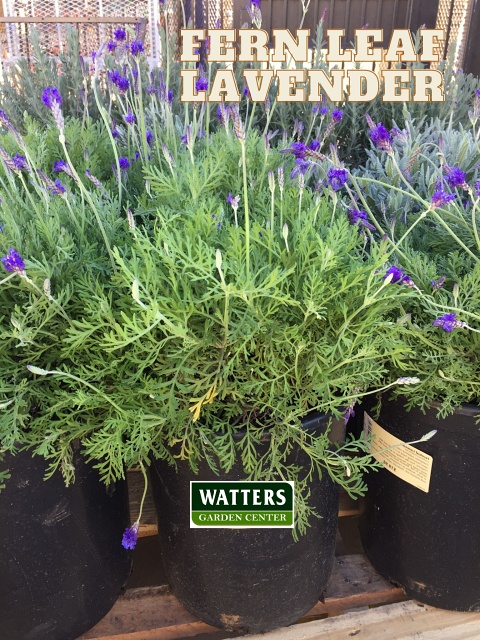
Fern-leaf Lavender – this unique variety has cut and divided leaves, hence the name. Brighter green foliage than others. The flowers are branched and held very high on tall stalks that dance in the mountain breeze. This Lavender blooms the entire growing season from spring through autumn. Shrubs reach 2′ feet tall by 3′ feet wide and require little pruning. It looks great planted in containers where the fragrance greets their gardener upon each return.
Growing Better Lavender
All lavenders like growing in the sunny parts of Prescott and the surrounding cities with well-drained soil. This is one of the few herbs that stay green through winter with the added benefit of being extremely animal resistive. Containers filled with Watters Potting Soil produce picture-perfect Lavenders.

The right food brings out the color and fragrance. Feed this plant twice monthly with Watters ‘Flower Power’ for a never-ending fragrance.
Lavender Care – most varieties do not like a lot of water or clay soil, for that matter. These guys are tough. It is the main reason they make such good container plants. Too much water kills more lavenders than under, so err on neglect rather than loving this plant to death. Cut Lavenders back by shearing foliage by a third right after flowering to keep them tidy and neat.
There… wasn’t that easy? You are now an expert on all things Lavender. We have a bunch of varieties with a bunch of herbal experts here at Watters Garden Center that can help further.
Harvesting Flowers – Lavender can be enjoyed as fresh-cut flowers or dried. If drying, simply hang cut stems in bunches upside down in a cool, dry place until dry. To use in sachets, remove the florets from the stems before drying.
There… wasn’t that easy? You are now an expert on all things Lavender. We have a bunch of varieties with a bunch of herbal experts here at Watters Garden Center that can help you further.
July Companion Plant that outshines the rest is Rose of Sharon
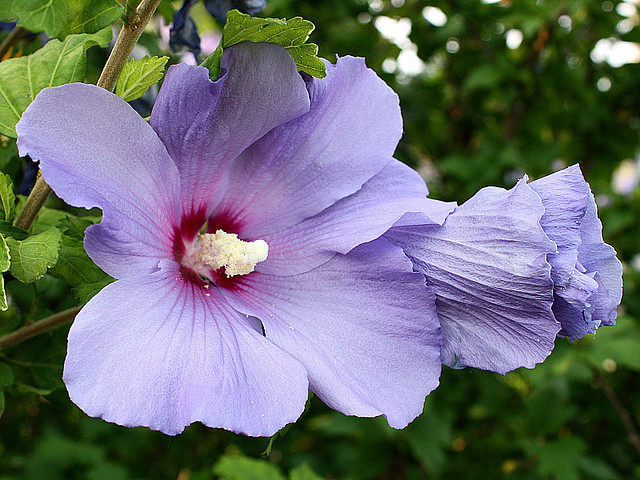
Breathtaking large blue flowers are adorned with lacy centers to create anemone-like blooms. Each stem of this hardy hibiscus is packed with numerous buds. This vigorous head-high shrub offers late-season color for hedges and perennial or shrub borders. Flowers continuously over a long season and rarely sets seeds. Makes a beautiful informal wall or screen and is easily trained into a small tree. Available Prescott colors show in blue, purple, white, red, and pink for years of enjoyment.

Free Summer Garden Classes – We upgraded our P.A. system with a direct link to our live Facebook and YouTube stream of the class, held every Saturday from 9:30 to 10:30 am. Here is the July lineup:
July 15 – The Plant Doctor and Healing Sick Plants
July 22 – Privacy Screens and Barriers
July 29 – Edible Landscape with Trees & Berries
Until next week, I’ll be helping gardeners grow better Lavenders here at Watters Garden Center.
Ken Lain can be found throughout the week at Watters Garden Center, 1815 Iron Springs Rd in Prescott, or contacted through his website at WattersGardenCenter.com or Top10Vegetables.com

